Have you ever wondered what you will do with the tree stumps in your yard? One option is to leave the stumps to rot. While that may be one way to look at it, your yard might be covered in carpenter ants and termites feasting on the rotting tree stump. So, it will not be a waste of time if you want to learn how to seal a tree stump.
That will create a nuisance and compromise the other flora in your yard. Thus, it’s best to preserve your tree stump and create some cool landscaping elements in your yard or make great seating arrangements indoors.
The process of treating a tree stump is very simple. All you need to do is remove the stump, clean it, sand it and preserve it with a sealant. This article will share the process and a few other essential bits you need to know about preserving tree stumps.
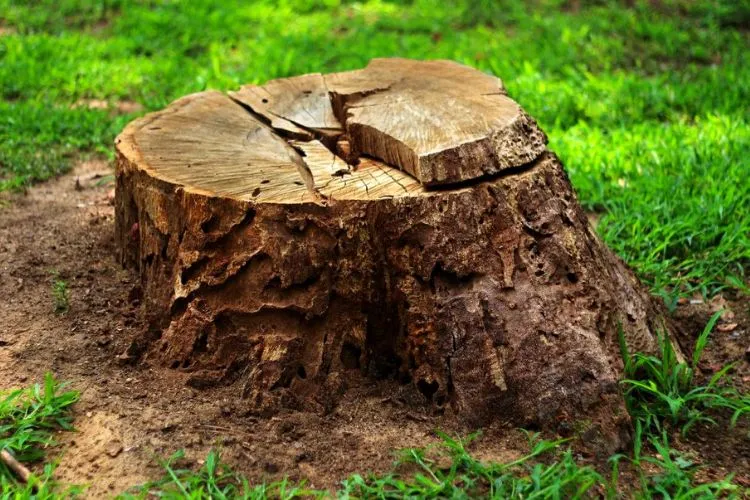
How to seal a tree stump?
To seal the tree stump for outdoor, there are a few steps to follow. Firstly, you need to clean the stump thoroughly and sand it to remove any dirt or debris. This process removes any fungus from the piece of wood as well. Additionally, the tree bark needs to be removed.
Once this stage is complete, apply a sealant layer on top of the stump to keep it from decomposing.
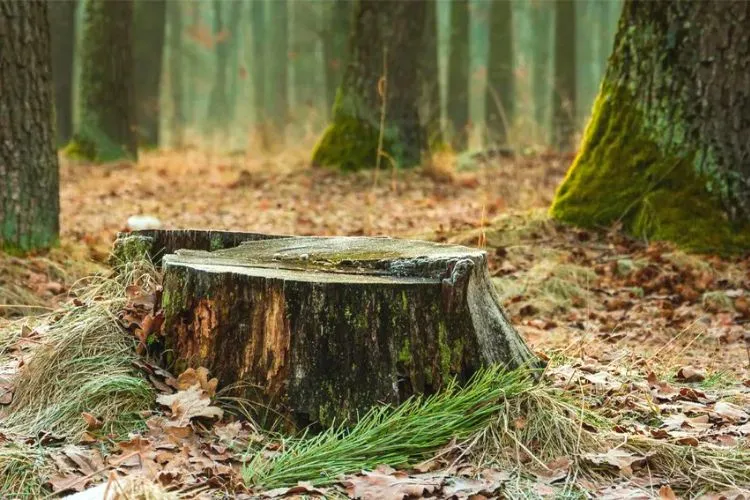
Materials needed for sealing:
The materials required for sealing the tree bark include:
- Newspaper and drop cloths.
- Fine-grain sandpapers.
- Premium quality wood sealant.
As you can see, you require only a few basic materials to seal a tree stump all of which are available in hardware stores. You can get them online too.
Step-by-Step Guide To Seal Tree Stump
Once you have the required materials, you can start the preservation process of your tree stump.
1. Preparing the stump for sealing
For starters, if you want to remove the stump, cut it from the ground. You need to cut straight across the stump for 6 inches, then dry it out and ensure it does not retain any moisture. The drying process roughly takes six months. After six months, you can start removing the bark.
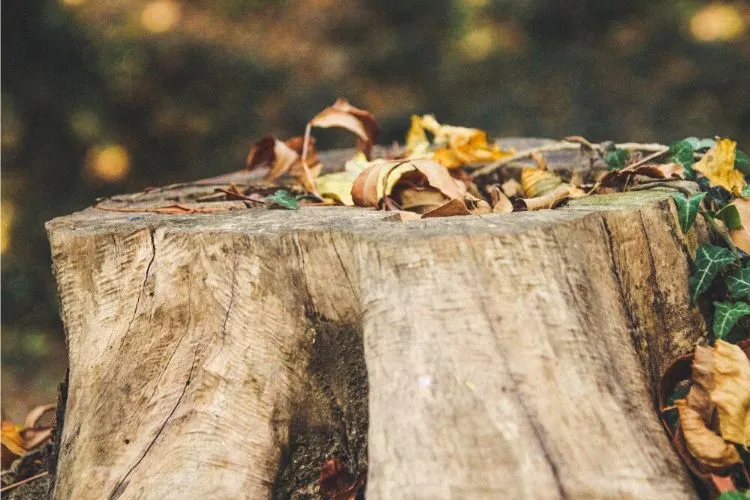
The process will be easy and you can remove the bark in large pieces simply with your hands. You can also use a pry bar or wood chisel to do the job faster.
2. Cleaning the stump
Once you have removed the bark, gently remove the remaining dirt and debris using a damp cloth. Do not use any harsh chemicals to clean the stump. Sand the stump for a finer finish after cleaning it.
3. Applying sealant to the stump
Apply a layer of sealant to protect the stump from any decay. If you want some additional colors, add a layer of stain. It’s best to apply some exterior wood sealant product in two to three coats in small batches. Allow each coat to dry out first.
4. Allowing the sealant to dry
Once you are done with the final coat, let the stump dry for 48 hours.
Maintenance and preventative measures
Once you have sealed your tree stump, you can rest assured. Stumps do not require any additional maintenance. They can stay in the same conditions for years to come.
Since the sealant protects the stump from fungi and rot, it lasts longer. However, applying a fresh layer of sealant in a few years is advisable to maintain the tree stump’s longevity. You can even consider making indoor decor with such stumps.
Types of Tree Stump Sealants and Their Suitability
To ensure the desired aesthetics for your wood stump, you need to pick the right sealant. There are many choices available and we will discuss a few of those. Make sure you pick a sealant based on your requirement.
1. Varnish
This is the most common tree stump sealant. These are available in both colored and transparent options.
Made from resin, solvent, and oil, these sealants are quite durable and protective and you can use them for external and indoor tree stumps.
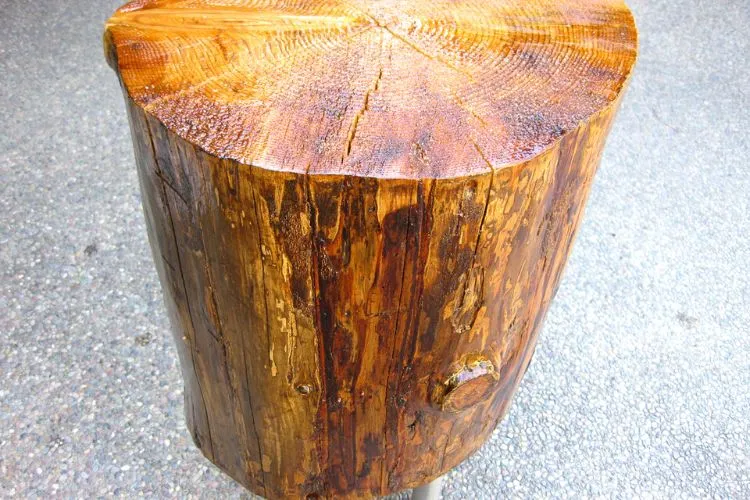
Oil finish
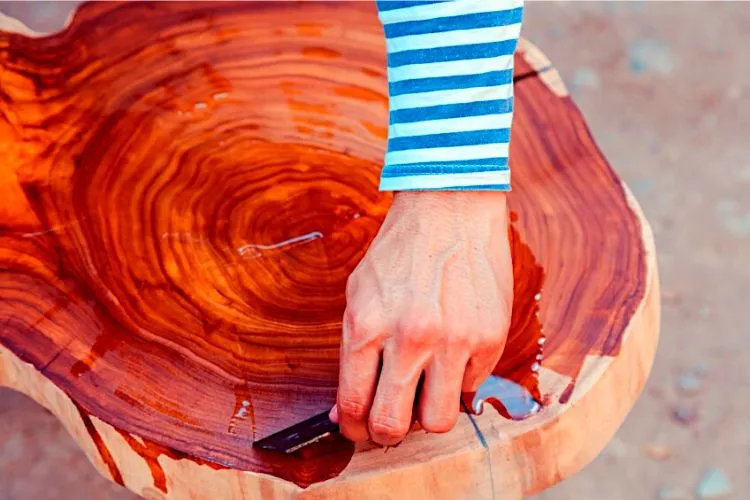
These sealants are excellent for enhancing the looks of unfinished wood. Once you start drying the tree stump, it loses its natural oil over time.
Oil finishes replenish that natural oil and enhance its grain. The properties of oil finish make them ideal for indoor tree stumps.
Wax finish
This type of wood finish is not popular for its short-term protection. However, these are easy to apply but require multiple applications to get the desired results.
You need to buff it at the end as well. However, they do not provide the required protection against scratches and wear.
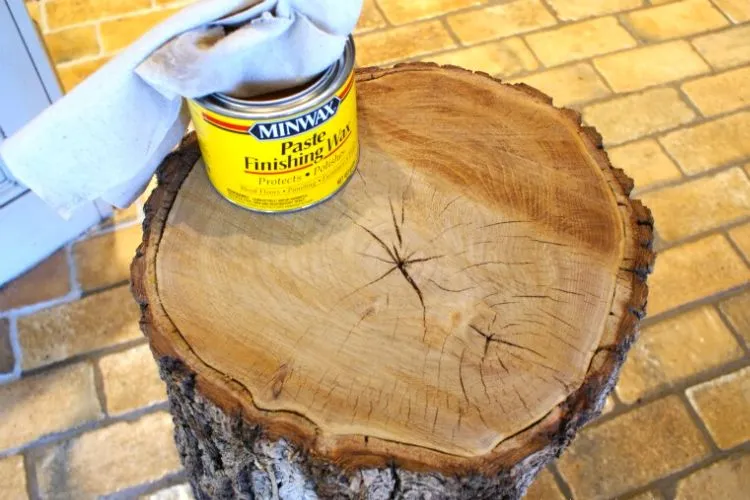
Wood dye
Wood dyes are a popular choice as they match the existing wood color. Besides, they can also change the surface color. Wood dyes work in the same manner as cloth dyes.
Though they bring a change in color, they do not hide the existing wood grains, so they may not be suitable for those looking for an opaque finish.
Wood stains
Opt for a wood stain if you want to enhance the color and grain of your existing tree stump.
It’s advisable to opt for a darker color wood stain than the wood to get a uniform and consistent finish. These are also available in various colors and thus offer a better selection.
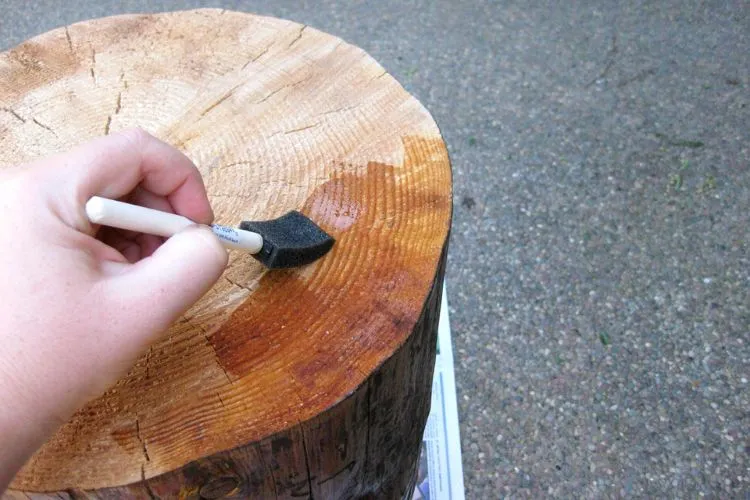
Safety precautions to be taken when sealing a tree stump
Though the process of sealing a tree stump is not dangerous in any way, a few safety precautions are required:
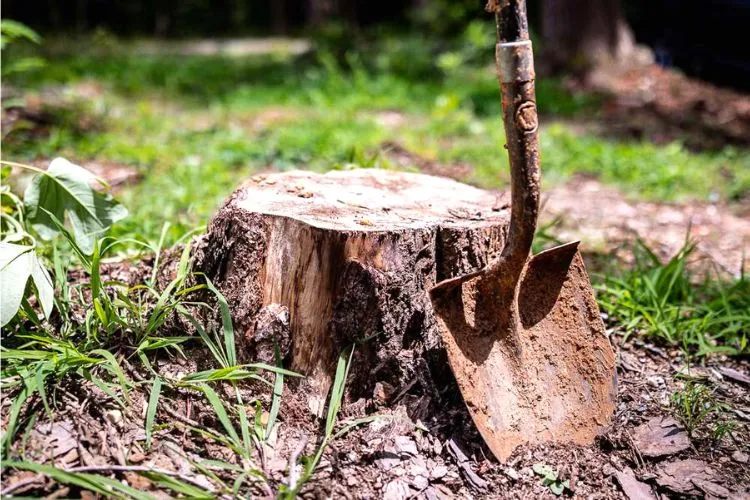
- It’s advisable to a pair of gloves throughout the process to prevent your hands from coming in contact with any chemicals you might be using.
- Remove the stump carefully. If you are not handy with the axe or saw seek professional help to remove the stump
- Use protective gear while using the pry bar or wood chisel to remove the dry bark.
- Sealants may sometimes contain toxic fumes so it’s advisable to wear a mask and gloves while using it on the bark
You May Also Find Useful: How To Hollow Out A Tree Stump
Conclusion:
Instead of keeping tree stumps lying on the ground, which is a proven hazard, you can do a lot of cool stuff with them. In this article, we have covered the topic in depth. To begin with, remove the tree stump from the ground, clean and sand it, and finally, add a few layers of sealant to it to keep it from rotting.
Even though stumps treated in this manner last for a long time, you may have to touch up the wood finish from time to time to ensure its health.


